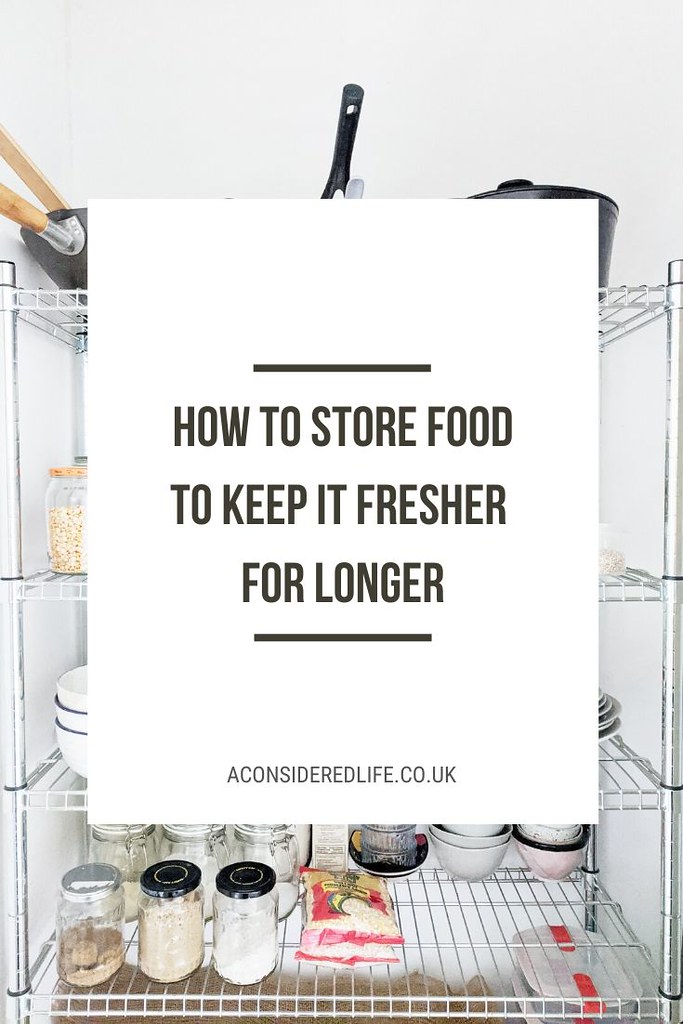
Now more than ever it's important to reduce food waste and the easiest way to do that is by following a few simple rules that will ensure you're storing produce correctly, helping to keep it fresher for longer.
Foods you find to be notorious for turning bad before you've had a chance to eat them (think: lettuce, avocado, bananas, or herbs) can be kept healthy just by storing them differently. If you're unsure whether to mix your onions with your potatoes, leave your tomatoes on the counter, store lettuce and herbs loose, or if there's a better place to put your bananas, read on.
There are few basic rules for avoiding food waste so read those first to prevent disasters that can be avoided. If you're in doubt about how to use up ingredients, I recommend downloading my Low Waste Plant Based Cookbook. There's a recipe for homemade veg stock, pickles, and marinades that will use up all those odds and ends.
The following is a list of the most common fresh fruit and veggies and how to store store in your kitchen or pantry. These are guidelines, which you may need to tweak. In my north-facing kitchen, these are the best ways I've found to store fresh produce for making it last longer.
Asparagus. Trim the ends, place them in a jar with some water, and store in the fridge.
Aubergine. Best stored at room temperature and eaten within a week.
Avocado. Store on the counter. Placing them near bananas will help ripen them and covering a cut avocado with lemon juice in a jar will somewhat prevent browning.
Bread. Store in a bread bin or cotton bag.
Beetroot. Remove the green tops (they draw the moisture out of the vegetable) and store in the fridge.
Celery. Store loose in the fridge or place the stalks in a jar of water and leave out on the kitchen counter. Change the water once to twice a week.
Chili Peppers. Place them in a container or jar and freeze them.
Corn. Eat as quickly as you can and certainly within 3 days, or else it loses its flavour.
Cucumber. In the fridge or on the counter, wherever you have space.
Garlic. Keep the bulb whole, ideally in a dark place but on the counter out of direct sunlight is fine.
Ginger. Keep on the counter if you use it regularly, otherwise freeze it. Freezing makes ginger easier to grate and peel.
Green Beans. Store them in a cloth bag in the fridge.
Herbs. Wrap in a damp towel or cloth bag and keep in the fridge. After a week, remove the towel and replace it with a new one.
Leeks. Store loose in the fridge.
Lettuce. Store whole heads loose in the fridge.
Mushrooms. Store them in a cloth bag in the fridge.
Onions, Shallots, Potatoes, Pumpkins, and Squash. Store in a cool, dry spot out of the fridge. Keep onions away from other vegetables otherwise they speed up the decay.
Root Vegetables. Store loose in the fridge.
Sprouts. Completely dry them out and then store in the fridge in a cloth bag or glass container.
Tomatoes. Store at room temperature not in the fridge.
Fruit. Store at room temperature. Some fruits last longer than others; apples and bananas are good for over a week while berries need to be eaten quickly or frozen. If you find any fruit is about to turn bad, chop it up and freeze it. Keep bananas away from other fruit as it will prevent them from spoiling.
Bell Peppers, Bok Choy, Broccoli, Brussel Sprouts, Cabbage, and
Cauliflower. Store loose in the fridge but keep an eye on them and eat quickly. Most will last a week or just over.
Pantry Staples. Grains, flour, sugar, etc. should be kept in air-tight containers, either flip top jars or repurposed glass jars will do. Store them in a dark, cool, dry place.

